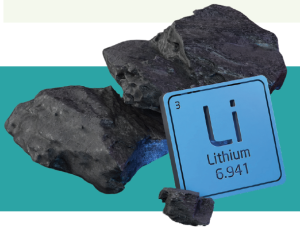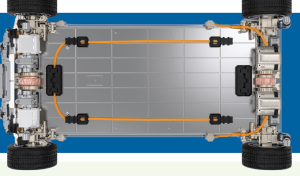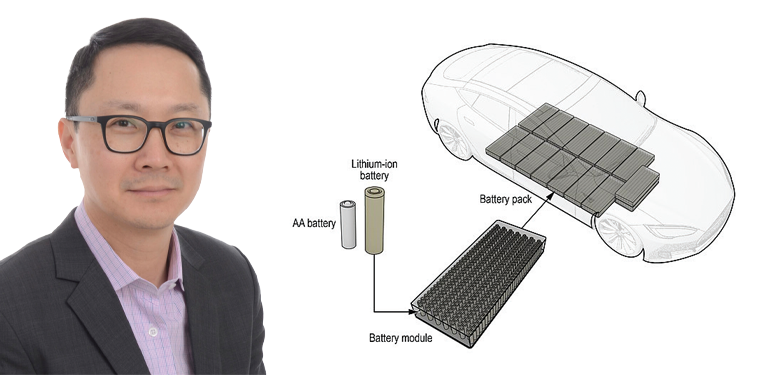Reducing the risks of used EV battery fires
By/par Joseph Chung
Joseph Chung leads the Account Management team at Call2Recycle Canada. With 26 years of account management experience, he is responsible for all account partner programs to improve awareness and access to end-of-life battery recycling. Joseph leads Call2Recycle Canada’s eMobility and EV battery recycling activity, collaborating with automotive manufacturing and battery recycling industries to provide end-to-end EV battery services and support the booming growth of the Canadian EV industry.
Achieving Canada’s greenhouse gas reduction targets relies heavily on the adoption of electric vehicles (EVs). In 2017, fewer than 17,000 EVs were sold in Canada. By the next year, that number had doubled and in 2022, more than 114,000 new EVs took to Canadian streets. The Canadian government is throwing its support behind this shift with billions of dollars in production incentives.
Regardless of the battery type, every battery eventually loses its charge. As a result, in the next decade and beyond, we will see a staggering number of EV batteries reach the end of life (EOL) stage. As our government and governments worldwide focus on strategies to reduce our dependence on raw materials and develop strong circular economies, battery recycling—and EV battery recycling in particular—will be central to these efforts.
An EV battery may follow any one of several pathways at the end of its life, including repair, remanufacturing, resale and repurposing, but each pathway ultimately leads to recycling. The number of EV battery recycling processors has more than doubled in the past five years.
That’s because the components in an EOL battery—like lithium, cobalt, graphite, copper and aluminum—are still viable. Extracting these same raw components from the earth is comparatively financially and environmentally costly. Moreover, Canadian waste regulations prevent the disposal of large EV batteries in landfills, where they can leach chemicals into groundwater and affect the surrounding soil. Battery recycling is, to put it bluntly, a no-brainer, as the battery components can be used to create new batteries and other products, such as stainless steel appliances, golf clubs, bicycles and more.
The benefits of battery recycling are clear, but some recent high-profile reports of EV battery fires and electric vehicle recalls related to fire risks may have auto industry professionals who routinely handle or store batteries concerned about their safety. Every energy source comes with some risk, and with the large currents associated with EV batteries, a little worry is understandable. However, when EV batteries are properly maintained, stored and handled, thermal incidents are exceedingly rare.
SAFEKEEPING OF EV BATTERIES FOR RECYCLING
The majority of thermal incidents occur because the battery has been damaged, altered or it is sub-standard and not an approved battery for the device. Check all EV batteries for punctures, cracks, signs of leaking, water damage or corrosion at the terminals. Signs that the battery has been opened and worked on or other unusual features, like loose wires, can also increase the likelihood of a thermal reaction.
If any of these are present in a battery you are handling, Call2Recycle can help with the safe removal and disposal of the battery.
When storing EV batteries for recycling, check that the battery is from a reputable original equipment manufacturer (OEM.) OEMs exercise strict control over material quality, proper venting and heat transfer pathways in their batteries to create well-designed, safe energy sources. Non-OEMrated batteries may not be subject to such engineering and rigorous testing, increasing the likelihood of ignition and potential damage or injury and often do not have proper battery management systems. Exercising extra care with non-OEM rated batteries is advised.
Whenever possible, do not store EV batteries indoors and keep isolated outdoors. Ensure that the terminals have proper protection and do not come into contact with metal or other battery terminals, which, regardless of EOL status, can cause sparks. Spacing batteries apart to minimize the risk of a thermal event and keeping a clear perimeter around the stored batteries is also advised.
Battery recycling allows us to maximize the end-of-life applications of EV battery components. Safe collection and storage is a critical part of this process. As long as EV batteries are managed using these best practices and then recycled through programs like Call2Recycle, they will continue to provide a safe, effective and renewable source of energy.
FAST BATTERY FACTS
Pushing the boundaries of electric vehicle (EV) batteries—both on and off the road—is hard to do without a proper understanding of the facts. Check out the details below to add a new spark to your recycling learning curve.
 When it comes to EV batteries, while lithium is a major component, its recovery is often not as important as other critical materials like cobalt, manganese, and nickel. According to Joseph Chung, because these materials are often finite, recovering EV batteries is a key step in creating a circular recycling economy.
When it comes to EV batteries, while lithium is a major component, its recovery is often not as important as other critical materials like cobalt, manganese, and nickel. According to Joseph Chung, because these materials are often finite, recovering EV batteries is a key step in creating a circular recycling economy.
 There are two main processes of metal reclamation for EV batteries: pyrometallurgy and hydrometallurgy. Pyrometallurgy smelts the battery, burning off unwanted materials in a process that recovers 25 to 40 percent of precious metals. Comparatively, during hydrometallurgy, batteries are instead shredded, and valuable metals are leached out with solvents.
There are two main processes of metal reclamation for EV batteries: pyrometallurgy and hydrometallurgy. Pyrometallurgy smelts the battery, burning off unwanted materials in a process that recovers 25 to 40 percent of precious metals. Comparatively, during hydrometallurgy, batteries are instead shredded, and valuable metals are leached out with solvents.
 Before a battery can be recovered, repurposed, or recycled, potential damages must be recorded. When looking at an EV battery, watch out for dents in the shell, leaks, or evidence of smoke.
Before a battery can be recovered, repurposed, or recycled, potential damages must be recorded. When looking at an EV battery, watch out for dents in the shell, leaks, or evidence of smoke.
NAVIGATING SAFETY IN THE VOLT AGE
As with internal-combustion-engine (ICE) vehicles, dismantling and recycling an electric vehicle poses specific safety concerns. When dealing with a damaged EV, it is important to remain aware of shock and fire risks, as well as potential respiratory risks. Alongside these physical concerns, EVs also often include advanced technology such as data storage systems. It is important that recyclers and clients maintain an open dialogue about removing personal data from the vehicle to avoid creating any unnecessary tech-fueled tears.


























